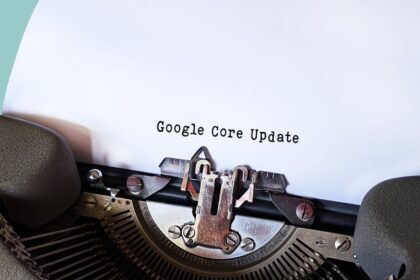Understanding the intricate relationship between E-A-T (Expertise, Authoritativeness, Trustworthiness) and On-Page SEO is paramount for any digital entity striving for sustained organic visibility and user confidence in the contemporary search landscape. Google’s algorithmic evolution, particularly its emphasis on the Quality Rater Guidelines, has unequivocally spotlighted the significance of presenting content that not only answers user queries but also originates from a demonstrably credible source. On-Page SEO, far from being a mere technical checklist, transforms into the tangible execution of these E-A-T principles, weaving trust signals directly into the fabric of a website’s architecture and content. It is the art and science of signaling to both search engines and human visitors that a page offers valuable, reliable, and expert information, thereby building an enduring foundation of trust that underpins long-term SEO success.
The Foundational Pillars of E-A-T in On-Page Context
E-A-T is not a direct ranking factor in the traditional sense, but rather a set of principles that Google’s algorithms are designed to evaluate and reward. It’s a lens through which content quality and website legitimacy are assessed, particularly for “Your Money or Your Life” (YMYL) topics, which encompass areas like finance, health, safety, and legal advice. For these crucial subjects, the stakes are exceptionally high, and misinformation or unreliable guidance can have severe adverse impacts on users. Therefore, demonstrating superior E-A-T becomes an existential imperative for YMYL sites. However, its influence extends far beyond YMYL, subtly shaping rankings across virtually all niches by fostering a holistic sense of authority and reliability.
Expertise: Demonstrating Profound Knowledge on the Page
Expertise, the first component of E-A-T, refers to the demonstrable skill, knowledge, and experience of the creator of the main content (MC) on a given page. On-page SEO provides manifold opportunities to explicitly showcase this expertise.
Comprehensive and Accurate Content: The most fundamental display of expertise is through the content itself. Expert content is characterized by its depth, accuracy, and thoroughness. This means going beyond superficial answers to frequently asked questions, delving into nuances, exploring underlying mechanisms, and providing actionable insights.
- Long-Form Content: While not a magic bullet, longer content often correlates with greater depth, allowing for comprehensive coverage of a topic. An expert isn’t afraid to elaborate, provide context, and anticipate follow-up questions.
- Factual Accuracy and Verifiability: Every claim, statistic, or piece of data presented must be meticulously accurate and, where appropriate, verifiable. For scientific, medical, or legal content, this translates to linking to original research papers, governmental advisories, or reputable institutions. Even for non-YMYL content, backing claims with data from reliable sources reinforces credibility.
- Original Research and Insights: True expertise often manifests in original contributions – new perspectives, unique data analysis, proprietary methodologies, or first-hand case studies. Publishing such content positions the website as a thought leader rather than merely an aggregator. On-page, this means clearly presenting the methodology of studies, displaying raw data or visualizations, and discussing implications.
- Addressing the User’s Intent Exhaustively: An expert anticipates the user’s full journey of inquiry. This means crafting content that answers not just the immediate query but also related sub-queries and potential follow-up questions. Using tools like “People Also Ask” sections in SERPs can guide this comprehensive approach.
Author Credentials and Biographies: Google explicitly looks for information about who is responsible for the content. Clearly identifying and showcasing the expertise of the author(s) is a direct E-A-T signal.
- Prominent Author Boxes: Include a well-designed author box at the beginning or end of articles. This box should contain a professional photo, the author’s full name, their professional title, a brief biography highlighting relevant qualifications, experience, and achievements (e.g., “Dr. Jane Smith, a board-certified dermatologist with 15 years of clinical experience”).
- Linking to Author Profile Pages: The author’s name in the author box should link to a dedicated “About the Author” page. This page can provide a more extensive biography, list publications, certifications, academic degrees, professional affiliations, and even links to their social media profiles (especially LinkedIn or academic research profiles) or personal websites, further validating their credentials.
- Organization-Wide Expertise: For websites representing an organization (e.g., a hospital, law firm, financial institution), the “About Us” page becomes critical. It should detail the qualifications of the organization’s leadership, key staff, and the collective expertise of the team. Highlighting industry awards, certifications, or long-standing reputation contributes significantly.
- Schema Markup for Authors and Organizations: Implementing Person Schema markup for individual authors and Organization Schema for the website’s entity helps search engines understand and categorize the identities and roles of content creators. This machine-readable data directly communicates the expertise and authority signals. For instance, using
Personschema to specifyalumniOf,hasOccupation,worksFor, ormemberOfcan explicitly detail an author’s background.
Content Organization and Presentation: An expert not only possesses knowledge but can also articulate it clearly and logically. On-page structural elements support this demonstration of expertise.
- Logical Information Hierarchy: Use H1-H6 headings effectively to structure the content, guiding the reader through complex topics with a clear, intuitive flow. This not only enhances readability but also signals to search engines the logical organization of expert-level information.
- Technical Accuracy vs. Accessibility: While expert content might necessitate technical jargon, an expert also knows how to make complex topics accessible. This can involve providing definitions for technical terms, using analogies, or offering simplified explanations alongside detailed ones.
- Use of Visuals and Multimedia: Experts often use visual aids to explain concepts more effectively. Incorporating relevant diagrams, charts, infographics, and videos (e.g., an expert explaining a concept on camera, a demonstration) can enhance the perceived expertise and user engagement. Ensure all media is high-quality, relevant, and properly optimized with alt text and captions.
- FAQs and Structured Data: Including a comprehensive FAQ section directly addresses common user questions, showcasing an understanding of user needs. Using FAQPage Schema markup not only improves visibility in SERPs (e.g., rich snippets) but also signals to search engines that the page provides detailed answers to common inquiries, a hallmark of expertise.
Authoritativeness: Establishing Industry Recognition on the Page
Authoritativeness, the second pillar of E-A-T, refers to the overall standing of the website and its content creators as a respected and recognized source within their respective industry or niche. While expertise focuses on who knows the information, authoritativeness focuses on how widely that knowledge is recognized and trusted by others.
Citations and References: A highly authoritative source cites its information diligently. This extends beyond internal linking to include strategically linking out to other high-authority, relevant external sources.
- Outbound Links to Authoritative Sources: Unlike the common misconception that outbound links bleed “link juice,” strategically linking to highly respected, trustworthy external resources (e.g., academic journals, government websites, well-known news organizations, reputable research institutions) enhances the authoritativeness of your own content. It demonstrates that your content is well-researched and grounded in established knowledge. Google’s Quality Rater Guidelines explicitly look for this.
- Becoming a Citable Source: Strive to create content so valuable and well-researched that other authoritative sites naturally want to link to you. This is the ultimate passive authority signal. On-page, this means publishing original studies, unique data sets, in-depth reports, or definitive guides that serve as primary references in your field.
- Attribution and Source Credits: When referencing specific data, studies, or quotes, always provide clear attribution. This applies to both internal content (e.g., “According to our recent survey…”) and external sources (“As reported by the World Health Organization…”). This transparency is a key trust signal.
User-Generated Content and Social Proof (On-Page Display): The collective voice of users and the broader community can powerfully reinforce authority.
- Customer Reviews and Testimonials: For commercial sites, prominently displaying authentic customer reviews, star ratings, and testimonials builds immense trust and authority. This is especially true when reviews are comprehensive and address specific aspects of the product or service.
- Review Schema Markup: Implementing
RevieworAggregateRatingschema markup helps search engines understand the nature of user feedback and can lead to star ratings appearing in SERP snippets, significantly boosting click-through rates and perceived authority. - “As Seen On” or “Featured In” Sections: If your brand, website, or key personnel have been featured, quoted, or mentioned in reputable publications, news outlets, or industry conferences, create a dedicated section (e.g., “Our Mentions,” “Press,” “In the News”) on your homepage or About Us page. Displaying logos of well-known entities lends significant borrowed authority.
- Case Studies and Success Stories: Detailed case studies demonstrating how your product, service, or advice has positively impacted real users or clients are powerful authority builders. They provide concrete evidence of efficacy.
Brand Signals and Entity Recognition: Consistent and professional brand representation contributes to overall authoritativeness.
- Professional Website Design: A well-designed, modern, and user-friendly website instantly conveys professionalism and competence. A cluttered, outdated, or broken design can erode trust and signal a lack of attention to detail.
- “About Us” Page: This page is a cornerstone of authoritativeness. It should articulate the company’s mission, values, history, key milestones, and the team behind the operation. Transparency about the organization builds trust. Include clear contact information (physical address if applicable, phone number, email address).
- Contact Information: A readily accessible “Contact Us” page with multiple ways to get in touch (phone, email, contact form, physical address) is crucial. It signals transparency and accountability. For local businesses, ensuring NAP (Name, Address, Phone Number) consistency across the website and external listings is vital.
- Domain Age and History (Indirect On-Page Signals): While not directly controllable via on-page SEO, a long-standing, consistently updated website with a clean history (no spam penalties) accrues authority over time. On-page, maintaining consistent branding, content quality, and site structure over years helps reinforce this longevity.
Internal Linking Strategy: A well-structured internal linking strategy not only aids user navigation and crawlability but also consolidates and distributes authority across a website.
- Content Hubs and Topic Clusters: Organizing content into topic clusters, with a pillar page acting as a central authority for a broad subject and supporting cluster content delving into specific sub-topics, demonstrates comprehensive coverage and deep authority within that niche. Links from supporting content back to the pillar page, and vice-versa, reinforce topical authority.
- Contextual Internal Links: Linking relevant keywords within the body text of articles to other related pages on your site helps users explore topics in more depth and signals to search engines the interconnectedness and comprehensive nature of your content.
- Breadcrumbs: Implementing breadcrumb navigation clarifies the user’s location within the site hierarchy and helps search engines understand the site’s structure, which is a subtle authority signal for well-organized content.
Trustworthiness: Cultivating Reliability and Safety On-Page
Trustworthiness, the third and arguably most encompassing component of E-A-T, refers to the legitimacy, transparency, and safety of the website. It assures users that they can interact with the site without risk and that the information provided is honest and unbiased. Trustworthiness is a prerequisite for both expertise and authoritativeness to be fully recognized.
Security and Data Protection: In an age of increasing cyber threats, demonstrating a commitment to user security is non-negotiable.
- HTTPS (SSL Certificate): This is foundational. Having an SSL certificate encrypts data transferred between the user’s browser and the server, protecting sensitive information. Google explicitly uses HTTPS as a minor ranking signal, but more importantly, browsers flag non-HTTPS sites as “not secure,” immediately eroding trust. Displaying the padlock icon in the browser signals safety.
- Privacy Policy: A clear, concise, and easily accessible Privacy Policy page is mandatory for compliance with regulations like GDPR, CCPA, and others. It must clearly outline what user data is collected, how it’s used, how it’s stored, and whether it’s shared with third parties. This transparency builds immense trust.
- Terms of Service/Use: A comprehensive Terms of Service page outlines the legal agreements between the website and its users. It sets expectations, defines responsibilities, and protects both parties. Like the Privacy Policy, it must be easily found.
- Cookie Consent Banners: For websites operating in regions with data privacy laws, a prominent and functional cookie consent banner is essential. It signals compliance and respect for user privacy choices.
Transparency and Honesty: Openness about the nature of content and relationships builds a strong foundation of trust.
- Affiliate Disclosures: If a page contains affiliate links, a clear and prominent disclosure (e.g., “This post may contain affiliate links, which means I may earn a commission if you make a purchase”) is crucial. Hiding affiliations can lead to distrust and potential penalties.
- Sponsored Content/Advertorials: Any content that is sponsored or paid for should be explicitly labeled as such. Deceiving users by presenting advertisements as unbiased editorial content severely damages trustworthiness.
- Correction Policies: For news sites, publishers, or information platforms, having a publicly stated correction policy demonstrates accountability. It shows that the site is committed to accuracy and rectifies errors transparently.
- Accessibility Statement: An accessibility statement (detailing efforts to make the site usable for people with disabilities) demonstrates inclusivity and a commitment to serving all users, which fosters trust.
- Clear Business Information: For e-commerce or service-based businesses, easily discoverable information about company registration, VAT numbers, physical addresses, and official business names enhances trustworthiness.
User Experience (UX) as a Trust Signal: A positive user experience subtly communicates reliability and professionalism. A frustrating experience, conversely, implies a lack of care and competence.
- Site Speed and Core Web Vitals: A fast-loading website signals efficiency and professionalism. Slow load times frustrate users and often lead to bounces. Core Web Vitals (Largest Contentful Paint, First Input Delay, Cumulative Layout Shift) are crucial metrics Google uses to evaluate page experience, directly impacting rankings and user perception of trustworthiness. Optimizing images, leveraging browser caching, and minimizing render-blocking resources are key on-page actions.
- Mobile Responsiveness: With mobile traffic dominating, a website that renders perfectly across all devices is a non-negotiable trust signal. A broken or difficult-to-navigate mobile site conveys unprofessionalism.
- Intuitive Navigation: A clear, consistent, and easy-to-use navigation menu (including a functional search bar) allows users to find information effortlessly. A confusing navigation suggests disorganization, which erodes trust.
- Minimizing Intrusive Ads: While ads can be a revenue source, excessive or intrusive ads (e.g., pop-ups that cover content, auto-playing videos, interstitial ads) significantly degrade the user experience and convey a desperate, untrustworthy impression.
- Readability: Beyond just accurate content, it must be readable. This includes using appropriate font sizes, sufficient line height, good color contrast, short paragraphs, and effective use of white space. A wall of text is intimidating and suggests the content creator doesn’t value the reader’s experience.
- Broken Links and 404 Pages: Regularly auditing and fixing broken internal and external links is crucial. A site riddled with broken links appears neglected and unreliable. Custom 404 pages that are helpful and guide users back to relevant content are also a good trust signal.
Proof of Reputation and Customer Service (for Commercial Sites):
- Refund Policies and Guarantees: For e-commerce, clear, fair, and easily accessible refund, return, and shipping policies are essential. They demonstrate confidence in products/services and a commitment to customer satisfaction.
- Customer Support Channels: Providing multiple, easily accessible customer support options (live chat, phone, email, support ticketing system) signals that the business stands behind its offerings and is available to assist users.
- FAQ Pages for Products/Services: Beyond general FAQs, specific FAQs about products or services anticipate customer questions and provide transparent answers, reducing friction and building trust.
Advanced On-Page E-A-T Strategies and Technical Reinforcement
Beyond the fundamental principles, several advanced on-page strategies and technical SEO implementations can significantly amplify E-A-T signals.
Semantic SEO and Entity Optimization: Google’s understanding of content has evolved beyond keywords to a deeper comprehension of entities (people, places, things, concepts) and their relationships.
- Using LSI Keywords and Related Entities: Incorporate latent semantic indexing (LSI) keywords and conceptually related entities naturally within your content. This demonstrates a comprehensive understanding of the topic, signaling to search engines that your content covers the subject matter broadly and deeply, a hallmark of expertise.
- Topic Clusters for Entity Dominance: By creating robust topic clusters, where a central pillar page is supported by numerous interconnected content pieces, you establish your website as the definitive resource for a particular entity or set of entities, reinforcing both expertise and authoritativeness.
- Knowledge Graph Optimization: Aim to have your brand and key personnel recognized by Google’s Knowledge Graph. This involves consistent branding, creating comprehensive Wikipedia or Wikidata entries (if applicable and verifiable), and having strong entity associations across the web. On-page, this means ensuring your brand name and key figures are consistently used and linked where appropriate.
Multimedia Integration for Enhanced E-A-T:
- Expert Videos: Embed videos where experts (authors, company representatives) explain complex topics, offer demonstrations, or conduct interviews. Video content adds a human element, enhances engagement, and allows for direct demonstration of expertise. Ensure videos are high quality and transcriptions are provided for accessibility and SEO.
- High-Quality Images and Infographics: Visuals not only break up text but can also convey complex information succinctly. Custom-created, high-quality images, charts, and infographics demonstrate professionalism and a commitment to effective communication, enhancing trustworthiness. Ensure proper image optimization (file size, alt text, captions).
- Podcasts/Audio Content: Offering audio versions of articles or original podcast content adds another dimension to your E-A-T. It caters to different learning styles and positions your brand as a multi-modal authority. Transcripts should be provided on-page.
Regular Content Audits and Updates: E-A-T is not a static achievement; it requires continuous maintenance.
- Content Freshness and Accuracy: Information can quickly become outdated, especially in fast-evolving fields. Regularly audit existing content for accuracy, update statistics, revise outdated advice, and add new insights. This commitment to maintaining relevance signals ongoing expertise and trustworthiness.
- Identifying Content Gaps: Continuously research and identify topics or aspects of a subject that your current content doesn’t fully address. Creating new content to fill these gaps demonstrates a commitment to comprehensive coverage and sustained expertise.
- Pruning Low-Quality Content: Identify and either update, merge, or remove thin, outdated, or low-quality content that may be dragging down your overall E-A-T. A smaller volume of high-quality content is often more impactful than a large volume of mediocre content. This is a crucial aspect of overall site quality.
Technical SEO for Robust E-A-T Signals: While often seen as separate from E-A-T, technical SEO underpins the ability of search engines to discover, crawl, index, and understand the E-A-T signals you’ve meticulously built on your pages.
- Schema Markup (Beyond the Basics):
- Article Schema: For blog posts and articles,
Articleschema helps search engines understand the content type and its context. - How-To Schema: For instructional content,
HowToschema can display steps directly in SERPs, demonstrating clarity and utility. - FAQPage Schema: As mentioned, provides rich snippets for FAQ sections, signaling helpfulness.
- Organization Schema: Reinforces brand identity, location, and contact information.
- Product Schema: For e-commerce, clearly marks product information, including reviews and pricing, which are key trust signals.
- VideoObject Schema: For embedded videos, helps search engines understand the video’s content and creator.
- Article Schema: For blog posts and articles,
- XML Sitemaps: An up-to-date and well-structured XML sitemap helps search engines discover all your important pages, ensuring that your high-E-A-T content is crawled and indexed efficiently.
- Robots.txt: Correctly configuring your
robots.txtfile ensures that search engine crawlers can access the parts of your site you want them to, and are blocked from less important or duplicate areas, thereby focusing crawling efforts on high-E-A-T content. - Canonical Tags: Properly implementing canonical tags prevents duplicate content issues, which can confuse search engines and dilute the authority of your primary content. This ensures that the most authoritative version of a page is indexed.
- URL Structure: A clear, logical, and user-friendly URL structure (e.g.,
www.example.com/category/sub-category/article-title) not only aids user navigation but also provides semantic clues to search engines about the topic and hierarchy of your content, reflecting organized authority.
Competitive Analysis for E-A-T Benchmarking:
- Identify High-E-A-T Competitors: Analyze websites that consistently rank well for high-stakes queries in your niche, especially those in YMYL categories. These sites are likely already demonstrating strong E-A-T.
- Deconstruct Their On-Page E-A-T Signals: Systematically examine how these competitors present their expertise (author bios, content depth), authoritativeness (citations, brand mentions, internal linking), and trustworthiness (security, policies, UX).
- Identify Gaps and Opportunities: Pinpoint areas where your website might be lacking compared to these high-E-A-T performers. This might involve improving author profiles, adding more structured data, enhancing site security, or deepening content coverage.
- Adapt and Innovate: Don’t merely copy, but adapt their successful strategies and look for ways to innovate and surpass their E-A-T signals. Perhaps you can provide even more in-depth research, more comprehensive author biographies, or a more intuitive user experience.
In essence, E-A-T and On-Page SEO are inextricably linked. Every element on a page, from the words chosen to the underlying code, contributes to a holistic perception of credibility. It’s about designing a digital experience that screams “reliable,” “knowledgeable,” and “safe” to every visitor and, by extension, to Google’s sophisticated algorithms. Ignoring E-A-T in on-page efforts is akin to building a beautiful house on shaky foundations; it might look good initially, but it will eventually crumble under the weight of competition and algorithmic scrutiny. Conversely, meticulously weaving E-A-T into every on-page decision constructs a robust, trustworthy online presence that not only ranks but also genuinely serves and earns the confidence of its audience. This commitment to quality, authenticity, and user welfare is not merely an SEO tactic; it’s a fundamental principle for enduring online success.











